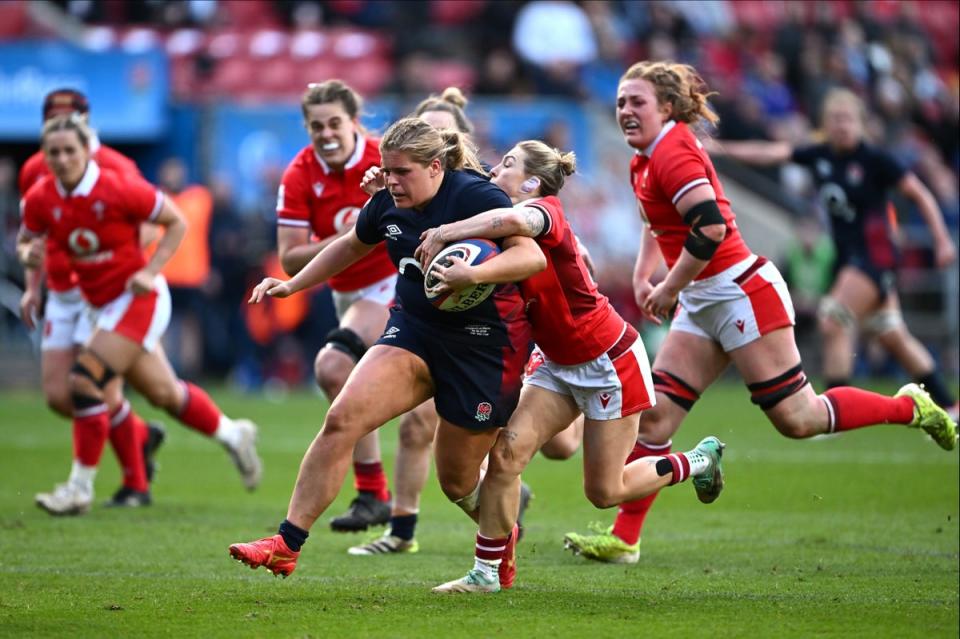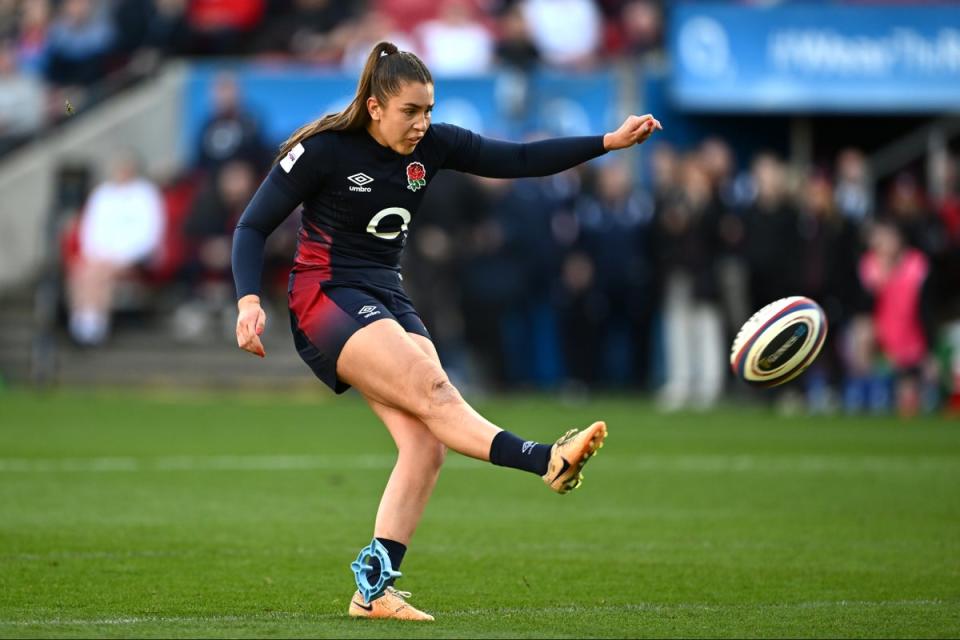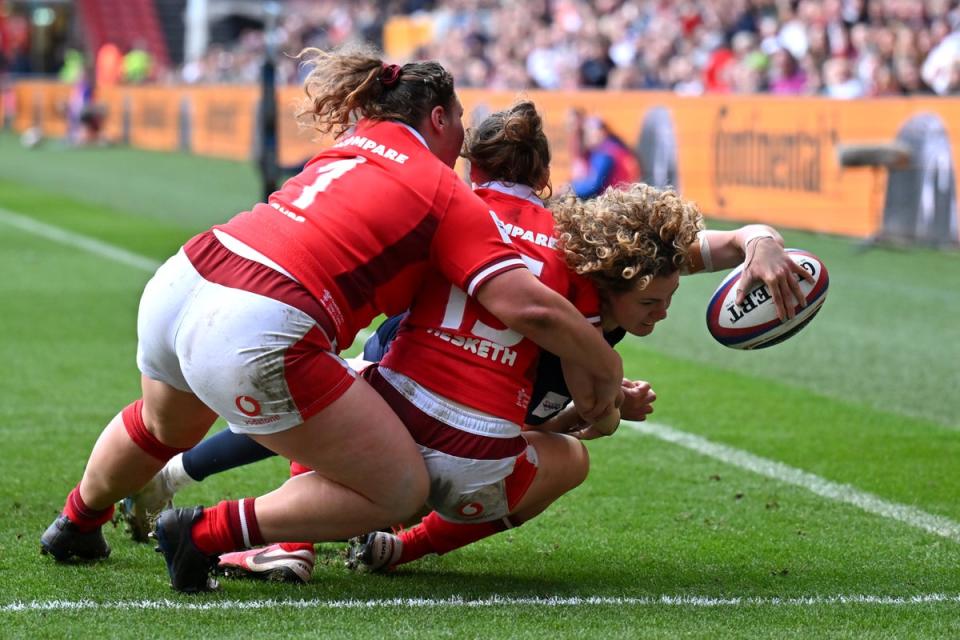The latest edition of one of rugby’s greatest rivalries once again illustrated that the gap between the best and the rest of the Women’s Six Nations remains enormous. It’s now three years since Wales equaled England in funding a professional programme, but a major divide remains between the two sides: the class of this championship is simply too fast, too strong and too good.
Last week’s first round win in Italy was already sloppy and scratchy, but this was more like the Red Roses side that has dominated this tournament for so long, varied and viciously. The hope was that Wales could build on an excellent opening 20 minutes in Cardiff last year, which saw them beat their English visitors, but while a smaller final margin suggests improvement, it was a mixed Welsh performance. Ioan Cunningham wasn’t helped by some late injury-induced changes, but the Wales coach will have been disappointed not to see his side perform better ahead of those making the short hop over the Severn.
That traveling contingent helped bolster a crowd of 19,705 in total, a record for a Red Roses home match away from Twickenham. There are understandable concerns that England’s dominance will ultimately prove to be a limiting factor on continued crowd growth, but for now the paying public appear to be perfectly happy when the home side win.


And why not if they are capable of doing so in such a style. England’s aim for this tournament is to evolve beyond the brilliant fundamentals that helped them establish their supremacy and instead become a side capable of playing in any format. Not everything turned out well, but there were encouraging glimpses here, especially from a beautifully balanced midfield of Holly Aitchison, Tatyana Heard and Meg Jones.
“We want to play with pace,” captain Marlie Packer said afterwards. “We want to put an exciting rugby brand on the field. We really showed that today. The set piece was phenomenal, our lineout worked really well in attack and defense and gave us forward football to play with.
“For us, it’s about letting go of the handbrake. At some points in the game the balls will go down because of the way we’re trying to play, but we want the fans to keep coming back and see some really good rugby.”
The intention was set from the first time England touched the ball. It had been a decent Welsh start, with Lleucu George taking advantage of a sustained period of possession to score a penalty earned from a powerful scrum, but the visitors soon fell behind. Abby Dow pushed his way past Jenny Hesketh, leaving the young full-back for dead on the break on the outside, and Maud Muir hit the line with power and expert timing to crash over.
England’s tremendous speed caused problems for Wales. John Mitchell has emphasized pace in his group of outside backs, which partly explains Emily Scarratt’s move to centre. Jones here replaces Helena Rowland, whose tournament is over due to a broken finger, and offers the same flicks, tricks, kicks and game-breaking threats as on the sevens circuit.


Cardiff-born Jones retains the Welsh flavor from her formative days on the other side of the border, but there are few prouder England internationals. The center has been a standout in a struggling Leicester team this year and has been exceptional here, punching well above her weight defensively and causing opposition Hannah Jones all kinds of attacking problems. Zoe Aldcroft had already smashed in England’s second score when Jones launched a full-field counter-attack, a blistering surge followed by a clever toe-in forward, with the try eventually completed by Hannah Botterman.
Wales had the continuity in phase play to maintain possession, but lacked the playmakers needed to break through a ferocious English defense. A few moments of profligacy didn’t help – Sian Jones forced himself at the base of a ruck, Aitchison picked an interception – but the hosts had largely dealt with Wales’ carrier strikes. When Lark Atkin-Davies continued the theme of five try scorers from a maul, England had a bonus point before half-time.
Cunningham had loaded his bench in the hope of matching England all the way and turned to regular starters Sisilia Tuipulotu and Alisha Joyce-Butchers during the break. It had little impact, with Ellie Kilnauw over within three minutes of the restart for England’s fifth place in the corner, and Dow a sixth soon after.
Another replacement stopped the rot. Livewire Keira Bevan was another surprise inclusion on the bench, giving her consistency as Cunningham’s number nine and her try was taken sharply, tapping and dancing under the posts.
But as is always likely, it turned out to be only a temporary reprieve. Kiltunnel squeezed free for her second, shortly after Rosie Galligan had been knocked over, and ensured all five tight five forwards were on the scoresheet to illustrate their full-field play.


A strong finish from Wales will provide a degree of optimism, but there are also some tough questions for Cunningham and his side. Wales were delighted to finish third and qualify for the WXV1 in this tournament a year ago, but found their trip to New Zealand a painful experience, hounded by the sport’s established powers such as gap year students. Scotland, on the other hand, returned from the second-tier competition with a trophy and momentum – it was no surprise to see them push France extremely close.
But Wales seems to have come to a somewhat standstill. It was the fundamentals of their game that let them down too often here, the lineout was miserable, their exits regularly shallow or messy and the opportunities passed away when they came. Their scavengers managed to harass England at the collapse, but the focus on that area left space in the wide channels, which their opponents exploited all too easily. The Red Roses march on.